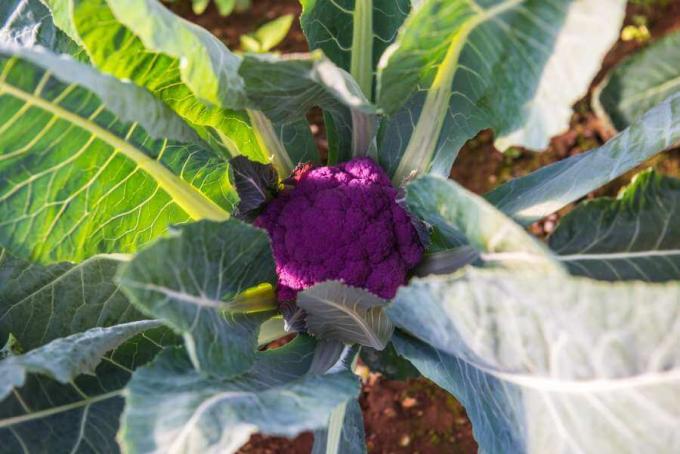The white heads of the cauliflower are prone to sunburn if exposed to too much sun. Here's what you need to do to avoid the damage.

The brilliant white florets of the cauliflower (Brassica oleracea var. botrytis) are real eye-catchers, but also very sensitive to strong sunlight. The discoloration caused by sunburn is not pretty, but it does not make the cauliflower inedible. With a few little tricks, you can effectively protect your cauliflower heads from discoloration. We will tell you below what is important.
"Contents"
- Cauliflower and sunburn: Fold over the leaves
- Cauliflower and sunburn: Choosing the right variety
- Colored varieties of cauliflower
- Self-covering white varieties
Cauliflower and sunburn: Fold over the leaves
The so-called "cauliflower florets" grow in the middle of the leaves of the cauliflower. The florets are the inflorescences of the cauliflower and the part of the plant that is eaten. A few weeks before the cauliflower harvest, when the sun is at its highest, you should bend the surrounding leaves inward to protect the delicate florets. The so-called "covering" does not harm the plant and preserves the aromatic taste and the bright white of the cauliflower head.
Cauliflower and sunburn: Choosing the right variety
Even when choosing the variety of cauliflower you can take preventative measures against sunburn. We explain to you which varieties are less susceptible and which can even protect themselves from sunburn.
Colored varieties of cauliflower
Cauliflower comes in many different varieties. In addition to the standard white varieties, there are also violet and yellow varieties. The color pigmentation of these varieties makes the florets less prone to sunburn. However, the discoloration that occurs with white heads does not affect taste or palatability in any way, this is just a matter of appearance.

Notice: The colored varieties are nutritionally even better than the white ones. Just try your luck.
Self-covering white varieties
If you don't want to do without white cauliflower but want to save yourself the trouble of covering it, you can use self-covering white varieties. The self-covering varieties do not unfold their leaves completely like conventional varieties, but still enclose the white florets for the most part and thus protect them from the sun. A typical self-covering variety is 'Tabiro' with a mild aromatic taste. The medium-tall autumn variety 'Nuage' is considered a more frost hardy variety. She is well covered and produces a heavy yield with large, white, heavily cupped flowers.



